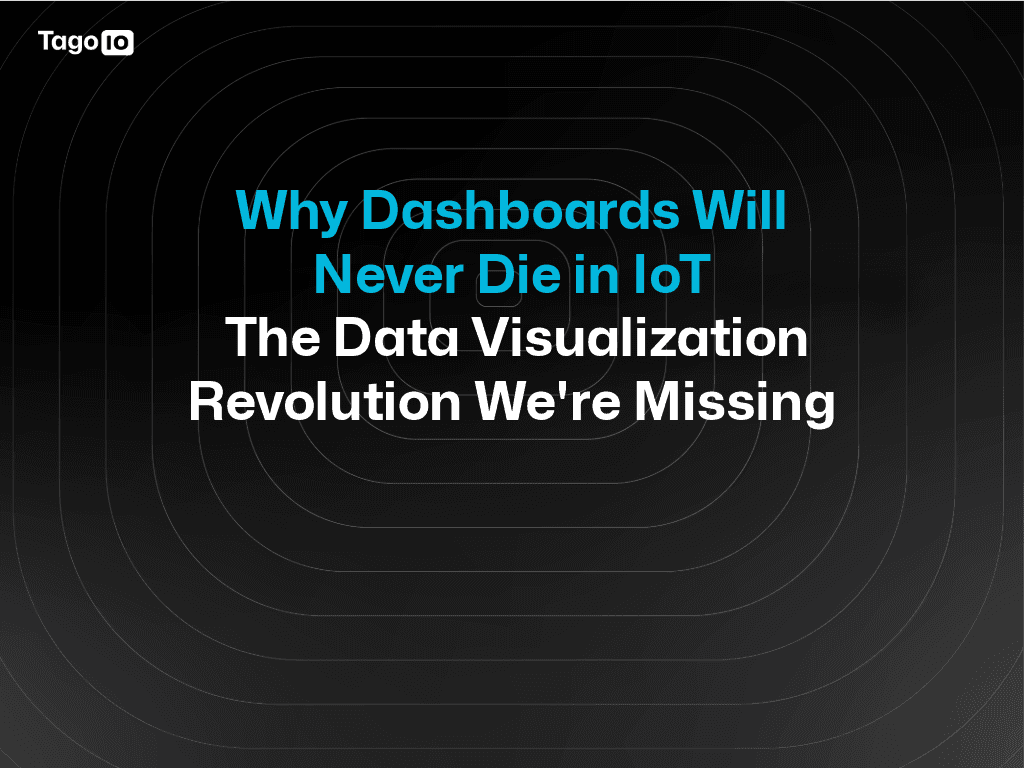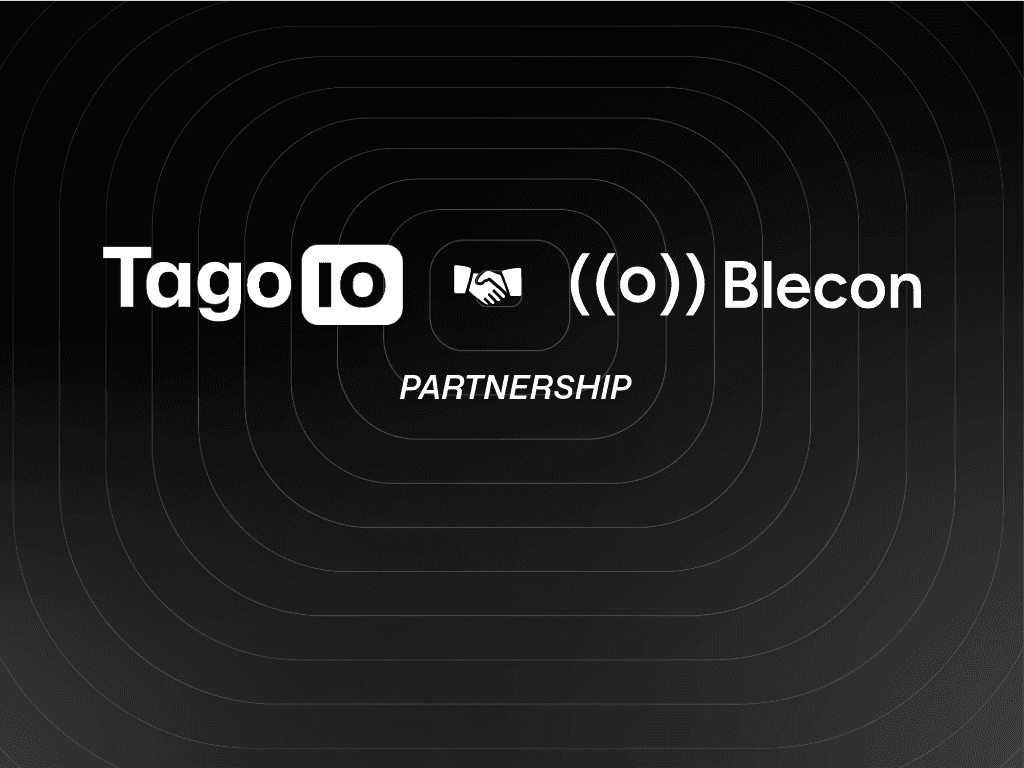Blog
Tech Insigths
How IoT Improves Equipment Manufacturing Productivity
Learn how IoT enhances manufacturing: cut costs, enable predictive maintenance, and gain real-time insights.

TagoIO Team
Oct 2, 2025



Why IoT Sensors Matter for Equipment Manufacturing Efficiency
The ongoing Industry 4.0 transformation is reshaping how manufacturers operate. Manual inspections and reactive maintenance are quickly becoming obsolete. Research shows that those embracing IoT technology are gaining productivity improvements of up to 20%, highlighting only the beginning of IoT’s vast potential in manufacturing.
McKinsey research estimates IoT's economic value will reach $12.6 trillion by 2030, with manufacturing industries showing the highest potential for value creation. This represents a fundamental shift in how equipment is manufactured, monitored, and maintained.
For equipment manufacturers (OEMs), IoT sensor implementation delivers measurable results: up to 30% reduction in unplanned downtime, lower maintenance costs through predictive analytics, and improved product quality via real-time monitoring.
According to Deloitte's Smart Manufacturing Survey 2024-2025, early adopters report:
20% improvement in production output. IoT provides real-time visibility into production bottlenecks that were previously invisible. One minute of downtime data that used to take hours to compile is now available instantly.
20% increase in employee productivity. With real-time data at their fingertips, operators make faster, better decisions. They spend less time collecting data and more time solving problems.
15% in newly available capacity. Hidden inefficiencies become visible. Micro-stops that weren't tracked manually are suddenly apparent. Equipment running below optimal speeds gets flagged automatically.
How IoT Sensors Drive Manufacturing Productivity: 4 Key Applications
IoT technology combined with the right cloud platform delivers measurable value for OEMs and their customers through these practical applications:
Predictive Maintenance and Condition Monitoring with IoT Sensors: vibration, temperature, current, and pressure sensors detect degradation before it becomes a critical failure. Instead of relying on costly preventive replacements or reacting to breakdowns, the machine itself signals when and where intervention is needed.
Reducing Downtime and Improving Overall Equipment Effectiveness (OEE): real-time IoT data enables quick responses and automation to keep production lines running longer with fewer losses. OEMs leveraging integrated dashboards and alerts in their production lines achieve significant efficiency gains.
Operational Cost Optimization: continuous monitoring makes it possible to fine-tune operating parameters (speed, torque, temperature) to maximize energy efficiency and minimize wear.
Engineering Feedback Loops: field data directly informs product design, helping R&D teams improve equipment faster and reduce defects.
From Reactive to Predictive: The New Technical Reality
Real-Time Data Collection
Modern platforms like TagoIO can integrate thousands of IoT devices simultaneously for equipment monitoring, leveraging edge devices that connect to the cloud via cellular (CAT-M, NB-IoT), WiFi, or LoRaWAN. Using lightweight protocols like MQTT, these systems can handle high-frequency data from thousands of devices simultaneously with minimal latency.
Sensors capture critical operational data including temperature variations, vibration patterns, pressure levels, speed and performance metrics, and energy consumption. This data flows through edge computing solutions that can perform basic analytics locally before transmission to the cloud, reducing bandwidth usage and enabling faster response times.
Predictive Maintenance That Actually Works
By analyzing historical patterns including vibration trends, temperature fluctuations, and performance degradation, IoT systems can predict equipment failures before they happen.
The impact includes maintenance performed only when necessary, equipment operating at peak efficiency, catastrophic failures prevented, and worker safety enhanced through early detection of potential issues.
Energy Optimization Without the Complexity
Beyond reliability, IoT systems also unlock smarter energy management. By tracking consumption patterns across equipment, manufacturers can identify where power is being wasted, adjust usage during peak and off-peak hours, and improve overall efficiency.
The result is a tangible reduction in operational costs and measurable progress toward sustainability goals, all achieved with tools that run quietly in the background without adding complexity to daily operations.
Implementation with TagoIO: Start Easy, Scale with Confidence
A reliable remote monitoring system usually follows three layers: sensors, edge/gateway, and cloud & analytics. Sensors capture critical operational data. This data flows through edge computing solutions that can perform basic analytics locally before transmission to the cloud, reducing bandwidth usage and enabling faster response times.
Modern platforms like TagoIO can integrate thousands of IoT devices simultaneously for equipment monitoring, leveraging edge devices that connect to the cloud via cellular (CAT-M, NB-IoT), WiFi, or LoRaWAN. Using lightweight protocols like MQTT, these systems can handle high-frequency data from thousands of devices simultaneously with minimal latency.

TagoIO's "Building Smarter Equipment Monitoring Systems" e-book shows how OEMs can manage thousands of devices, visualize time-series data, and configure custom alerts without building infrastructure from scratch.
The Path Forward: From Vision to Execution
The complexity of IoT implementation has dropped dramatically. What once demanded months of custom development and large specialized teams can now be accomplished in weeks. Today it is possible to manage the entire workflow more easily, from device connectivity and time-series data management to real-time visualization, alerting, and advanced analytics. Modern cloud infrastructure ensures performance and scalability as deployments expand, while the real challenge has shifted from technology to organizational readiness to act on the intelligence IoT provides.
By combining edge computing with the cloud, manufacturers can cut costs, lower latency, and act on data in real time. TagoCore, TagoIO’s open-source edge platform, enables local processing at gateways while seamlessly syncing with the cloud, delivering faster decisions, scalability, and reduced complexity for IoT projects.
For equipment manufacturers, this shift is not only about improving productivity but about reimagining operations. With proven gains of up to 20% and a market that continues to validate the value of IoT, the question is no longer whether to adopt it but how quickly to begin. In a sector where even a one percent efficiency improvement can translate into millions in savings, the 20% gains made possible by IoT represent a competitive advantage that is simply too significant to ignore.

TagoIO Team


